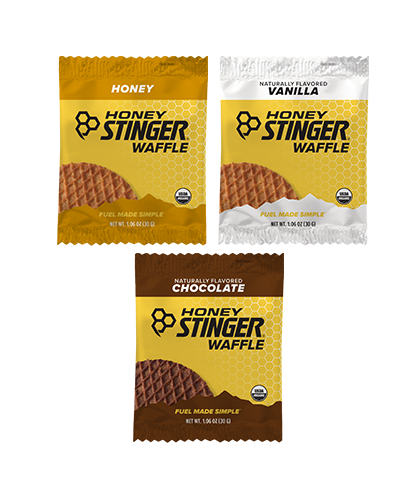Chia Berry Overnight Oats
Serves 1
Ingredients:
1 cup (240 mL) old fashioned oats
1/2 cup (120 mL) almond milk
1 Tablespoon (15 mL) chia seeds
1/3 cup (80 mL) frozen blueberries
1/3 cup (80 mL) frozen strawberries
1/3 cup (80 mL) frozen raspberries
Directions:
1. Mix the oats, almond milk, and chia seeds together in a small mixing bowl.
2. In a pint-size jar, start with 1/3 of the oatmeal mixture. Then layer frozen raspberries. Top with 1/3 of the oatmeal mixture. Then layer with frozen blueberries. Top with 1/3 of the oatmeal mixture. Finish with a layer of frozen strawberries.
3. Cover and refrigerate overnight.
Optional: To serve finish with 1 - 2 teaspoons maple syrup or agave nectar.
Topping suggestion: Top with fresh bananas, fresh raspberries, and/or coconut chips.
Nutrition Facts (per serving): 400 calories, 9 grams fat, 1 gram saturated fat, 0 grams trans fat, 0 milligrams cholesterol, 80 milligrams sodium, 73 grams carbohydrates, 15 grams fiber, 13 grams sugar, 12 grams protein
Golden Overnight Oats
Serves 1
Ingredients:
1 cup (240 mL) coconut, almond milk, or whole milk
1/2 teaspoon (2.5 mL) tumeric
1/4 teaspoon (1 mL) vanilla
2 teaspoons (10 mL) agave nectar
1/4 teaspoon (1 mL) cinnamon
1 cup (240 mL) old fashioned oats
Directions:
1. Combine the spices and agave nectar to the milk, whisk together. Then add the spice-milk mixture to the oats. Shake or stir to combine.
2. Transfer to a pint size jar or container, cover and refrigerate overnight.
Serving suggestions: Top with raisins, sliced pear, coconut flakes, and/or hemp seeds.
Nutrition Facts (per serving): 470 calories, 9 grams fat, 1 gram saturated fat, 0 grams trans fat, 0 milligrams cholesterol, 160 milligrams sodium, 80 grams carbohydrates, 10 grams fiber, 16 grams sugar, 15 grams protein
Maple Cinnamon Overnight Oats
Serves 1
Ingredients:
1 cup (240 mL) coconut, almond milk, or whole milk
1/2 teaspoon (2.5 mL) cinnamon
2 teaspoons (10 mL) maple syrup
1 cup (240 mL) old fashioned oats
Directions:
1. Combine the cinnamon, maple syrup, and the milk, whisk together. Then add the spice-milk mixture to the oats. Shake or stir to combine.
2. Transfer to a pint size jar or container, cover and refrigerate overnight.
Serving suggestions: Top with chopped apple slices, walnuts, chocolate chips, sliced banana, and/or pecans.
Nutrition Facts (per serving): 380 calories, 8 grams fat, 1 gram saturated fat, 0 grams trans fat, 0 milligrams cholesterol, 160 milligrams sodium, 70 grams carbohydrates, 9 grams fiber, 15 grams sugar, 11 grams protein












